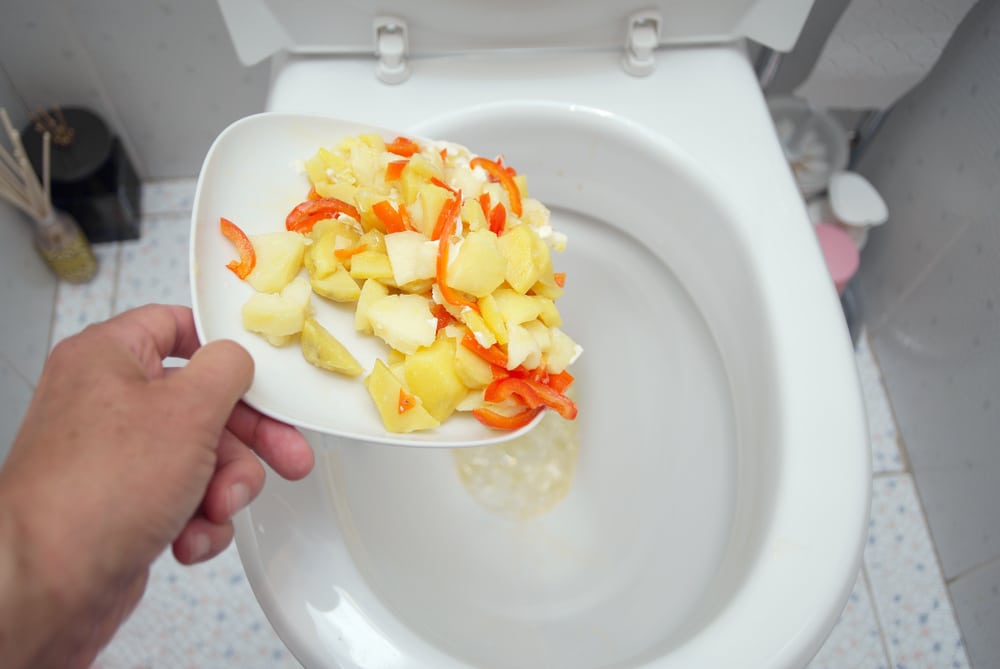Are You Able to Dispose of Food in the Toilet?
Are You Able to Dispose of Food in the Toilet?
Blog Article
We have discovered this great article involving Is it safe to flush food (especially rice) down the toilet? down the page on the net and thought it made sense to talk about it with you in this article.

Introduction
Lots of people are frequently confronted with the predicament of what to do with food waste, specifically when it comes to leftovers or scraps. One typical question that develops is whether it's alright to flush food down the toilet. In this article, we'll delve into the reasons people could think about purging food, the repercussions of doing so, and alternative methods for correct disposal.
Reasons people might consider flushing food
Absence of understanding
Some individuals might not be aware of the prospective damage brought on by flushing food down the bathroom. They may erroneously believe that it's a harmless practice.
Convenience
Flushing food down the toilet might feel like a fast and easy remedy to disposing of undesirable scraps, specifically when there's no nearby trash can readily available.
Idleness
Sometimes, individuals may merely choose to flush food out of large negligence, without thinking about the consequences of their actions.
Repercussions of flushing food down the commode
Environmental effect
Food waste that winds up in rivers can contribute to pollution and harm water ecological communities. In addition, the water made use of to flush food can stress water sources.
Pipes concerns
Purging food can cause stopped up pipes and drains pipes, triggering expensive plumbing repairs and inconveniences.
Types of food that ought to not be flushed
Coarse foods
Foods with coarse textures such as celery or corn husks can obtain tangled in pipes and cause blockages.
Starchy foods
Starchy foods like pasta and rice can take in water and swell, bring about clogs in pipelines.
Oils and fats
Greasy foods like bacon or food preparation oils ought to never ever be flushed down the commode as they can solidify and trigger blockages.
Proper disposal methods for food waste
Making use of a garbage disposal
For homes equipped with waste disposal unit, food scraps can be ground up and flushed with the plumbing system. Nonetheless, not all foods are suitable for disposal in this fashion.
Recycling
Particular food packaging materials can be recycled, reducing waste and reducing ecological influence.
Composting
Composting is an eco-friendly way to take care of food waste. Organic materials can be composted and utilized to improve dirt for horticulture.
The importance of appropriate waste management
Reducing environmental injury
Proper waste management practices, such as composting and recycling, help lessen contamination and maintain natural resources for future generations.
Protecting pipes systems
By staying clear of the technique of flushing food down the bathroom, homeowners can stop costly pipes repairs and maintain the stability of their pipes systems.
Verdict
In conclusion, while it might be tempting to flush food down the toilet for ease, it is essential to understand the potential repercussions of this activity. By taking on appropriate waste administration practices and disposing of food waste sensibly, individuals can contribute to healthier pipes systems and a cleaner environment for all.
FLUSH FOOD DOWN THE TOILET?
FLUSHING FOOD CAN CAUSE BLOCKED DRAINS IN YOUR HOME
All of the plumbing fixtures in your home are connected to the same sewer pipe outside of your home. This outdoor sewer pipe is responsible for transporting all the wastewater from your home to the Council sewer mains. Even small pieces of food that go down the kitchen sink can cause problems for your sewer. It should therefore be obvious that flushing larger bits of food, such as meat, risks a clog in either the toilet itself or the sewer pipes. Flushing greasy food is even more problematic because oil coagulates when it cools, coating the interior lining of your pipes.
THE TOILET IS NOT A BIN
Food isn’t the only thing that people shouldn’t be flushing down the toilet. People use the toilet to dispose of all kinds of things such as tampons, makeup wipes, dental floss, kitty litter and even underwear. Water goes to great lengths to educate residents about the high costs and stress placed on wastewater treatment systems simply from people flushing the wrong stuff down the toilet. It costs taxpayers millions of dollars each year, and homeowners thousands in blocked drain repairs.
FLUSHING FOOD IS A WASTE OF WATER
Flushing food is a waste of our most precious resource - water. In June this year Level 1 water restrictions were introduced to protect water supply from drought conditions. Much of New South Wales continues to be affected by prolonged drought with recent figures revealing up to 97 per cent of the state remains in drought. Depending on whether you have a single or dual flush toilet, every single flush uses between five and 11 litres of water. In the current climate this is a huge amount of water to be wasting on flushing food that should be placed in the bin (or better yet, the compost).
https://www.jabplumbingsolutions.com.au/blog/can-you-flush-food-down-the-toilet

I am just very inquisitive about What Can Happen If You Flush Food Down the Toilet? and I am hoping you enjoyed the new blog post. Appreciated our piece of writing? Please share it. Help others discover it. We thank you for reading our article about Think Twice Before Flushing Food Down Your Toilet.
Call Report this page